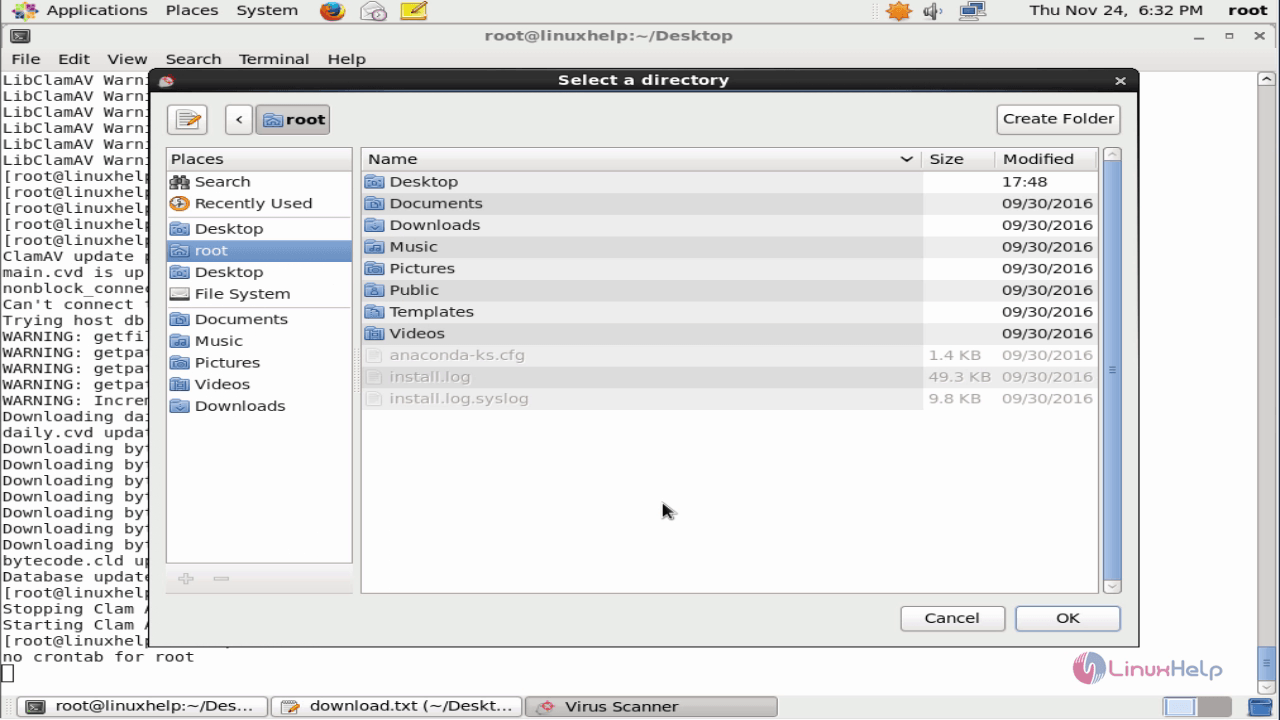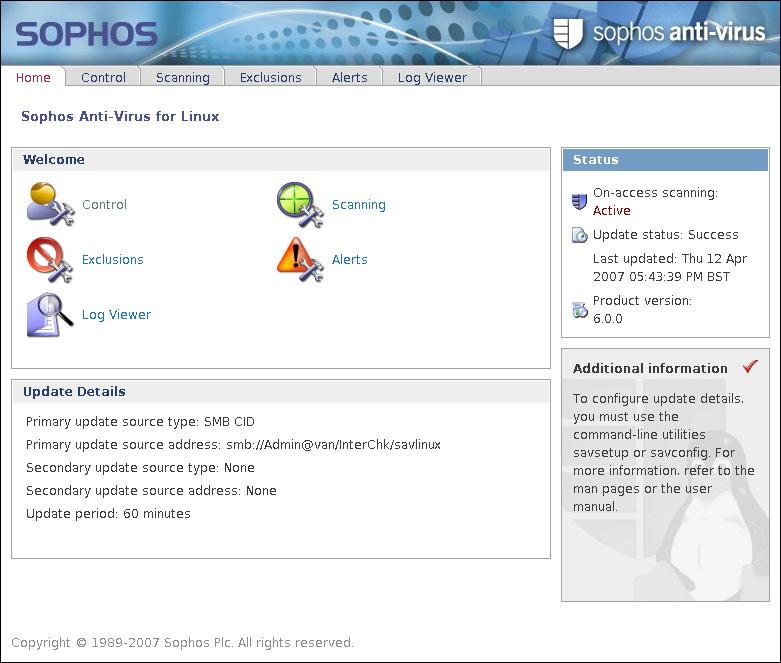Clamav Daemon Mac
How to install clamav on your Mac? The easiest way to get the ClamAV package is using Homebrew. ClamAV runs in one of three modes: Daemon (Socket): ClamAV is running on the same server as ownCloud. The ClamAV daemon, clamd, runs in the background. When there is no activity clamd places a minimal load on your system. If your users upload large volumes of files you will see high CPU usage. Daemon: ClamAV is running on a different server. One more thing, I also don't know if the logwatch no longer provides the ClamAV status in the log, or if something is wrong in my settings. The first 6 month when our first FC4 box was running, logwatch always reported ClamAV status, but since the reinstall about 8 month ago (due to harware chrash) it no longer have provided the ClamAV status in the logwatch.
3min Read
Do you want to protect your Linux VPS or server from dangerous malware and viruses? You can easily do that by installing an antivirus. There are plenty of options out there, but we do recommend to install ClamAV. It’s a great open-source antivirus solution against trojans, malware, and other security threats.
In this article, you will learn how to install ClamAV on CentOS 7 for better server protection!
Why Do You Need Antivirus on Linux Server?
While Linux is known to be one of the more secure operating systems, that doesn’t mean it is impenetrable to virus attacks. Onestudy has shown that 36% of total top malware cases in Q1 2017 were reported on Linux systems. What’s worse, is that these numbers are not going down.
It also states that 82% of the attacks target webservers. That’s more than enough to alert anyone about their VPS and server security. Therefore, you need an antivirus to give your system better online protection.
Thankfully, we have ClamAV, one of the best Linux security solutions to get rid of numerous malware threats. It’s reliable, easy to set up, and free. Just keep in mind that this guide will show you how to install ClamAV on CentOS 7 distribution.
Before we begin, make sure that you have root access to your CentOS 7 server or VPS. For Hostinger users, the required credential can be found on the Servers tab in hPanel.
Additionally, you need to know how to use Putty (Windows) or Terminal (macOS, Linux) to establish the SSH connection.
How to Install ClamAV on CentOS 7
We’ll divide this tutorial into three steps – installing ClamAV on CentOS 7, configuring SELinux, and configuring ClamAV. So, let’s get started!
1. Installing ClamAV on CentOS 7
- By default, ClamAV doesn’t come prepackaged in the CentOS software repository. We have to add the additional repository by running yum commands one after the other:
- Now, it’s time to install ClamAV on CentOS 7. Simply run the following command:
You have installed ClamAV, but we still need to make several additional configurations to make it work properly.

2. Configuring SELinux
SELinux is a security measure aimed at protecting changes to some files. Additional configuration is required if you want to use ClamAV with enabled SELinux kernel module. Otherwise, ClamAV will not be able to read certain sections of your files.
- To configure SELinux, execute the following commands one by one:
- Next, you have to verify the changes:
You should get this result:
Once ClamAV is ready to run alongside SELinux, it is time to configure the antivirus.
3. Configuring ClamAV
- Before you can enable ClamAV configuration, you need to remove Example string from the configuration file:
- Next, you will have to specify the server type. Open the configuration file using your favorite text editor. In this example, we will use nano. If it’s not already installed, you can do it using yum:
Next, open the configuration file:
Find the following line:
Remove the # symbol and save your changes.
- Now, remove Example string from ClamAV’s freshclam update engine configuration file:
- Once that’s done, you can run virus definition database update:
You should get a similar output:
- Lastly, start Clamd service and run it on boot:
Conclusion
Viruses can harm computers and even web servers at any given time, regardless of what operating system you’re using. Therefore, if you own a Linux VPS or a server, you must install an antivirus to protect it from malicious attacks.
You’ve learned how to install ClamAV on CentOS 7 using the command line. Let’s review the steps once more:
Clamav For Linux
- Download the EPEL repository and install ClamAV on CentOS 7.
- Configure SELinux to make sure ClamAV can thoroughly read all of your files.
- Configure ClamAV and start the service.
Clamav Windows
That’s it! Feel free to leave a comment below if you have any questions.

 hourglass_empty
hourglass_empty